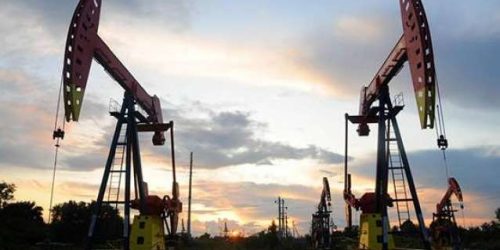Whenever an investor approaches a new industry, it is good to know what the risks are that a company in that sector must face to be successful. General risks apply to every stock, such as management risk, but there are also more concentrated risks that affect that specific industry. In this article, we’ll look at the biggest risks faced by oil and gas companies.
Political Risk
The primary way that politics can affect oil is in the regulatory sense, but it’s not necessarily the only way. Typically, an oil and gas company is covered by a range of regulations that limit where, when and how extraction is done. This interpretation of laws and regulations can also differ from state to state. That said, political risk generally increases when oil and gas companies are working on deposits abroad.
Oil and gas companies tend to prefer countries with stable political systems and a history of granting and enforcing long-term leases. However, some companies simply go where the oil and gas is, even if a particular country doesn’t quite match their preferences. Numerous issues may arise from this, including sudden nationalization and/or shifting political winds that change the regulatory environment. Depending on what country the oil is being extracted from, the deal a company starts with is not always the deal it ends up with, as the government may change its mind after the capital is invested, in order to make more profit for itself.
Political risk can be obvious, such as developing in countries with an unstable dictatorship and a history of sudden nationalization, or more subtle, as found in nations that adjust foreign ownership rules to guarantee that domestic corporations gain an interest. An important approach that a company takes in mitigating this risk includes careful analysis and building sustainable relationships with international oil and gas partners—if it hopes to remain in business for the long run.
Geological Risk
Many of the easy-to-get oil and gas is already tapped out, or in the process of being tapped out. Exploration has moved on to areas that involve drilling in less friendly environments, such as on a platform in the middle of an undulating ocean. There is a wide variety of unconventional oil and gas extraction techniques that have helped squeeze out resources in areas where it would have otherwise been impossible.
Geological risk refers to both the difficulty of extraction and the possibility that the accessible reserves in any deposit will be smaller than estimated. Oil and gas geologists work hard to minimize geological risk by testing frequently, and so it is rare that estimates are substantially “off.” In fact, they use the terms “proven,” “probable” and “possible” before reserve estimates, to express their level of confidence in the findings.
Price Risk
Beyond the geological risk, the price of oil and gas is the primary factor in deciding whether a reserve is economically feasible. Basically, the higher the geological barriers to easy extraction, the more price risk a given project faces. This is because unconventional extraction usually costs more than a vertical drill down to a deposit.
This doesn’t mean that oil and gas companies automatically cease operations on a project that becomes unprofitable due to a price dip. Often, these projects can’t be quickly shut down and then restarted. Instead, O&G companies attempt to forecast the likely prices over the term of the project in order to decide whether to begin. Once a project has begun, price risk is a constant companion.
Supply and Demand Risks
Supply and demand shocks are a very real risk for oil and gas companies. As mentioned above, operations take a lot of capital and time to get going, and they are not easy to shut down when prices go south or to ramp up when they go north. The uneven nature of production is part of what makes the price of oil and gas so volatile. Other economic factors also play into this, as financial crises and macroeconomic factors can dry up capital or otherwise affect the industry independently of the usual price risks.
Cost Risks
All of these preceding risks feed into the biggest of them all: operational costs. The more onerous the regulation and the more difficult the drill, the more expensive a project becomes. Couple this with uncertain prices due to worldwide production beyond any one company’s control, and you have some real cost concerns.
This is not the end, however, as many oil and gas companies struggle to find and retain the qualified workers that they need during boom times, so payroll can quickly rise to add another cost to the overall picture. These costs, in turn, have made oil and gas a very capital-intensive industry, with fewer players all the time.
Get 15% welcome bonus up to $500
Trade forex and CFDs on stock indices, commodities, stocks, metals and energies with a licensed and regulated broker. For all clients who open their first real account, XM offers a 15% welcome bonus up to $500 to test the XM products and services without any initial deposit needed. Learn more about how you can trade over 1000 instruments on the XM MT4 and MT5 platforms from your PC and Mac, or from a variety of mobile devices.





